TRADERS’ TIPS
August 2015

For this month’s Traders’ Tips, we focus on Vitali Apirine’s
June 2015 article, “The Slow Volume Strength Index,” as a followup
to last month’s Traders’ Tips, which focused on Vitali Apirine’s
April 2015 article, “The Slow Relative Strength Index.” Here,
we present the August 2015 Traders’ Tips code with possible implementations
in various software.
The Traders’ Tips section is provided to help the reader implement
a selected technique from an article in this issue or another recent issue.
The entries here are contributed by software developers or programmers for
software that is capable of customization.

TRADESTATION: AUGUST 2015
In “The Slow Volume Strength Index,” which appeared in the June
2015 issue of STOCKS & COMMODITIES, author Vitali Apirine describes a momentum
volume oscillator called the slow volume strength index (SVSI) that
he characterizes as measuring the buying and selling pressure relative to a
price exponential moving average. He then uses a method of smoothing based
on techniques originally presented by J. Welles Wilder. Apirine presents a
number of ways to use the oscillator, including combining it with his slow
relative strength index (SRSI) oscillator, which he presented in his article “The
Slow Relative Strength Index,”
which appeared in the April 2015 issue of STOCKS & COMMODITIES.
For users’ convenience, we are providing the code for a TradeStation
SVSI indicator as well as simple strategy based on the author’s work.
A sample chart is shown in Figure 1.
{
TASC Jun 2015
The Slow Volume Strength Index
Indicator
Vitale Apirine
}
inputs:
EMALength( 6 ),
SmoothingLength( 14 ),
OverBought( 80 ),
OverSold( 20 ),
MidLine( 50 ) ;
variables:
EMAValue( 0 ),
PosVolume( 0 ),
NegVolume( 0 ),
AvgPosVol( 0 ),
AvgNegVol( 0 ),
SVS( 0 ),
SVSI( 0 ),
MyVolume( 0 ) ;
if BarType >= 2 and BarType < 5 then
MyVolume = Volume
else
MyVolume = Ticks ;
EMAValue = XAverage( Close, EMALength ) ;
if Close > EMAValue then
begin
PosVolume = MyVolume ;
NegVolume = 0 ;
end
else if Close < EMAValue then
begin
PosVolume = 0 ;
NegVolume = MyVolume ;
end
else
begin
PosVolume = 0 ;
NegVolume = 0 ;
end ;
if CurrentBar = 1 then
begin
AvgPosVol = Average( PosVolume, SmoothingLength ) ;
AvgNegVol = Average( NegVolume, SmoothingLength ) ;
end
else if CurrentBar > 1 then
begin
AvgPosVol = ( ( AvgPosVol * 13 ) + PosVolume ) / 14 ;
AvgNegVol = ( ( AvgNegVol * 13 ) + NegVolume ) / 14 ;
end ;
SVS = iff( AvgNegVol <> 0, AvgPosVol / AvgNegVol, 100 ) ;
if SVS <> 0 then
SVSI = 100 - ( 100 / ( 1 + SVS ) ) ;
Plot1( SVSI, "SVSI" ) ;
Plot2( OverBought, "OB" ) ;
Plot3( OverSold, "OS" ) ;
Plot4( MidLine, "MidLine" ) ;
Strategy SVSI
{
TASC Jun 2015
The Slow Volume Strength Index
Strategy
Vitale Apirine
}
inputs:
EMALength( 6 ),
SmoothingLength( 14 ),
OverBought( 80 ),
OverSold( 20 ),
MidLine( 50 ) ;
variables:
EMAValue( 0 ),
PosVolume( 0 ),
NegVolume( 0 ),
AvgPosVol( 0 ),
AvgNegVol( 0 ),
SVS( 0 ),
SVSI( 0 ),
MyVolume( 0 ) ;
if BarType >= 2 and BarType < 5 then
MyVolume = Volume
else
MyVolume = Ticks ;
EMAValue = XAverage( Close, EMALength ) ;
if Close > EMAValue then
begin
PosVolume = MyVolume ;
NegVolume = 0 ;
end
else if Close < EMAValue then
begin
PosVolume = 0 ;
NegVolume = MyVolume ;
end
else
begin
PosVolume = 0 ;
NegVolume = 0 ;
end ;
if CurrentBar = 1 then
begin
AvgPosVol = Average( PosVolume, SmoothingLength ) ;
AvgNegVol = Average( NegVolume, SmoothingLength ) ;
end
else if CurrentBar > 1 then
begin
AvgPosVol = ( ( AvgPosVol * 13 ) + PosVolume ) / 14 ;
AvgNegVol = ( ( AvgNegVol * 13 ) + NegVolume ) / 14 ;
end ;
SVS = iff( AvgNegVol <> 0, AvgPosVol / AvgNegVol, 100 ) ;
if SVS <> 0 then
SVSI = 100 - ( 100 / ( 1 + SVS ) ) ;
if SVSI crosses over MidLine then
Buy next bar at Market
else if SVSI crosses under MidLine then
SellShort next bar at Market ;

FIGURE 1: TRADESTATION. Here is an example of the SVSI
indicator and strategy applied to a daily chart of the Dow Jones Industrial
Average (DJIA).
To download the EasyLanguage code, please visit our TradeStation and EasyLanguage
support forum. The code for this article can be found here: https://www.tradestation.com/TASC-2015.
The ELD filename is “TASC_AUG2015.ELD.” For more information about
EasyLanguage in general, please see https://www.tradestation.com/EL-FAQ.
This article is for informational purposes. No type of trading or investment
recommendation, advice, or strategy is being made, given, or in any manner
provided by TradeStation Securities or its affiliates.
—Doug McCrary
TradeStation Securities, Inc.
www.TradeStation.com
BACK TO LIST

eSIGNAL: AUGUST 2015
For this month’s Traders’ Tip, we’ve provided the study
SVSI.efs based on the formula described in Vitali Apirine’s article in
the June 2015 issue of S&C, “The Slow Volume Strength Index.” In
it, Apirine presents a volume oscillator based on J. Welles Wilder’s
relative strength index (RSI). It also utilizes a price-based exponential moving
average to determine overbought and oversold conditions, as well as divergences.
The study contains formula parameters that may be configured through the edit
chart window (right-click on the chart and select “edit chart”).
A sample chart plotting the SVSI is shown in Figure 2.
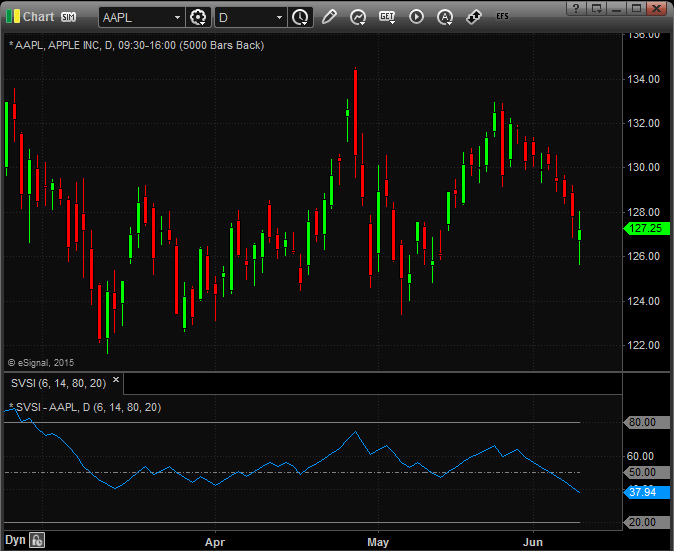
FIGURE 2: eSIGNAL. Here is an example of the SVSI study
plotted on a daily chart of AAPL.
To discuss this study or download a complete copy of the formula code, please
visit the EFS Library Discussion Board forum under the forums link from
the support menu at www.esignal.com or
visit our EFS KnowledgeBase at https://www.esignal.com/support/kb/efs/.
The eSignal formula script (EFS) is also available here:
/*********************************
Provided By:
Interactive Data Corporation (Copyright В© 2015)
All rights reserved. This sample eSignal Formula Script (EFS)
is for educational purposes only. Interactive Data Corporation
reserves the right to modify and overwrite this EFS file with
each new release.
Description:
The Slow Volume Strength Index by Vitali Apirine
Formula Parameters: Default:
Length EMA 6
Length Average Differences 14
Upper Bound 80
Lower Bound 20
Version: 1.00 06/05/2015
Notes:
The related article is copyrighted material. If you are not a subscriber
of Stocks & Commodities, please visit www.traders.com.
**********************************/
var fpArray = new Array();
function preMain(){
setStudyTitle("SVSI");
setCursorLabelName("Upper Bound", 0);
setCursorLabelName("Lower Bound", 1);
setCursorLabelName("Center Line", 2);
setCursorLabelName("SVSI", 3);
setDefaultBarFgColor(Color.grey, 0);
setDefaultBarFgColor(Color.grey, 1);
setDefaultBarFgColor(Color.grey, 2);
setShowCursorLabel(false, 0);
setShowCursorLabel(false, 1);
setShowCursorLabel(false, 2);
setShowCursorLabel(true, 3);
setDefaultBarStyle(PS_SOLID, 0);
setDefaultBarStyle(PS_SOLID, 1);
setDefaultBarStyle(PS_DASHDOT, 2);
setDefaultBarStyle(PS_SOLID, 3);
var x = 0;
fpArray[x] = new FunctionParameter("fpLengthEMA", FunctionParameter.NUMBER);
with(fpArray[x++]){
setName("Length EMA");
setLowerLimit(1);
setDefault(6);
};
fpArray[x] = new FunctionParameter("fpLengthAvgDiff", FunctionParameter.NUMBER);
with(fpArray[x++]){
setName("Length Average Differences");
setLowerLimit(1);
setDefault(14);
};
fpArray[x] = new FunctionParameter("fpSRSIHighBorder", FunctionParameter.NUMBER);
with(fpArray[x++]){
setName("Upper Bound");
setLowerLimit(0);
setUpperLimit(100);
setDefault(80);
};
fpArray[x] = new FunctionParameter("fpSRSILowBorder", FunctionParameter.NUMBER);
with(fpArray[x++]){
setName("Lower Bound");
setLowerLimit(0);
setUpperLimit(100);
setDefault(20);
};
}
var bInit = false;
var bVersion = null;
var xDifferences = null;
var xPositiveDiff = null;
var xNegativeDiff = null;
var xPositiveDiffAvg = null;
var xNegativeDiffAvg = null;
function main(fpLengthEMA, fpLengthAvgDiff, fpSRSIHighBorder, fpSRSILowBorder){
if (bVersion == null) bVersion = verify();
if (bVersion == false) return;
if (!bInit){
xDifferences = efsInternal('Calc_Differences', fpLengthEMA);
xPositiveDiff = getSeries(xDifferences, 0);
xNegativeDiff = getSeries(xDifferences, 1);
xPositiveDiffAvg = smma(fpLengthAvgDiff, xPositiveDiff);
xNegativeDiffAvg = smma(fpLengthAvgDiff, xNegativeDiff);
bInit = true;
};
var nPositiveDiffAvg = xPositiveDiffAvg.getValue(0);
var nNegativeDiffAvg = xNegativeDiffAvg.getValue(0);
if (nPositiveDiffAvg == null || nNegativeDiffAvg == null)
return;
var nSVSI = (nNegativeDiffAvg == 0) ? 100 : 100 - (100 / (1 + (nPositiveDiffAvg / nNegativeDiffAvg)));
return [fpSRSIHighBorder, fpSRSILowBorder, 50, nSVSI];
}
var xClose = null;
var xEMA = null;
var xVol = null;
function Calc_Differences(nLength){
if (getBarState() == BARSTATE_ALLBARS){
xClose = close();
xEMA = ema(nLength);
xVol = volume();
}
var nClose = xClose.getValue(0);
var nEMA = xEMA.getValue(0);
var nVol = xVol.getValue(0);
if (nClose == null || nEMA == null || nVol == null)
return;
var nPositiveDiff = nClose > nEMA ? nVol : 0;
var nNegativeDiff = nClose < nEMA ? nVol : 0;
return [nPositiveDiff, nNegativeDiff];
}
function verify(){
var b = false;
if (getBuildNumber() < 3742){
drawTextAbsolute(5, 35, "This study requires version 12.1 or later.",
Color.white, Color.blue, Text.RELATIVETOBOTTOM|Text.RELATIVETOLEFT|Text.BOLD|Text.LEFT,
null, 13, "error");
drawTextAbsolute(5, 20, "Click HERE to upgrade.@URL=https://www.esignal.com/download/default.asp",
Color.white, Color.blue, Text.RELATIVETOBOTTOM|Text.RELATIVETOLEFT|Text.BOLD|Text.LEFT,
null, 13, "upgrade");
return b;
}
else
b = true;
return b;
}
—Eric Lippert
eSignal, an Interactive Data company
800 779-6555, www.eSignal.com
BACK TO LIST

THINKORSWIM: AUGUST 2015
In his June 2015 article “The Slow Volume Strength Index,” author
Vitali Apirine expands on the slow relative strength index (SRSI) concept presented
in his April 2015 article, but this time, changes the focus to volume.
Keeping in the same theme as his earlier article that “slow and steady
wins the race,” he uses ideas from the SRSI concept but this time measures
the relative strength of volume.
We have recreated his slow volume strength index (SVSI) as a thinkorswim study
using our proprietary scripting language, thinkscript. We have made
the loading process extremely easy—simply click on the link https://tos.mx/MEqL2n and
choose save script to thinkorswim, then choose to rename your study
to “SlowVSI.” You can adjust the parameters of these within the edit
studies window to fine-tune your variables.
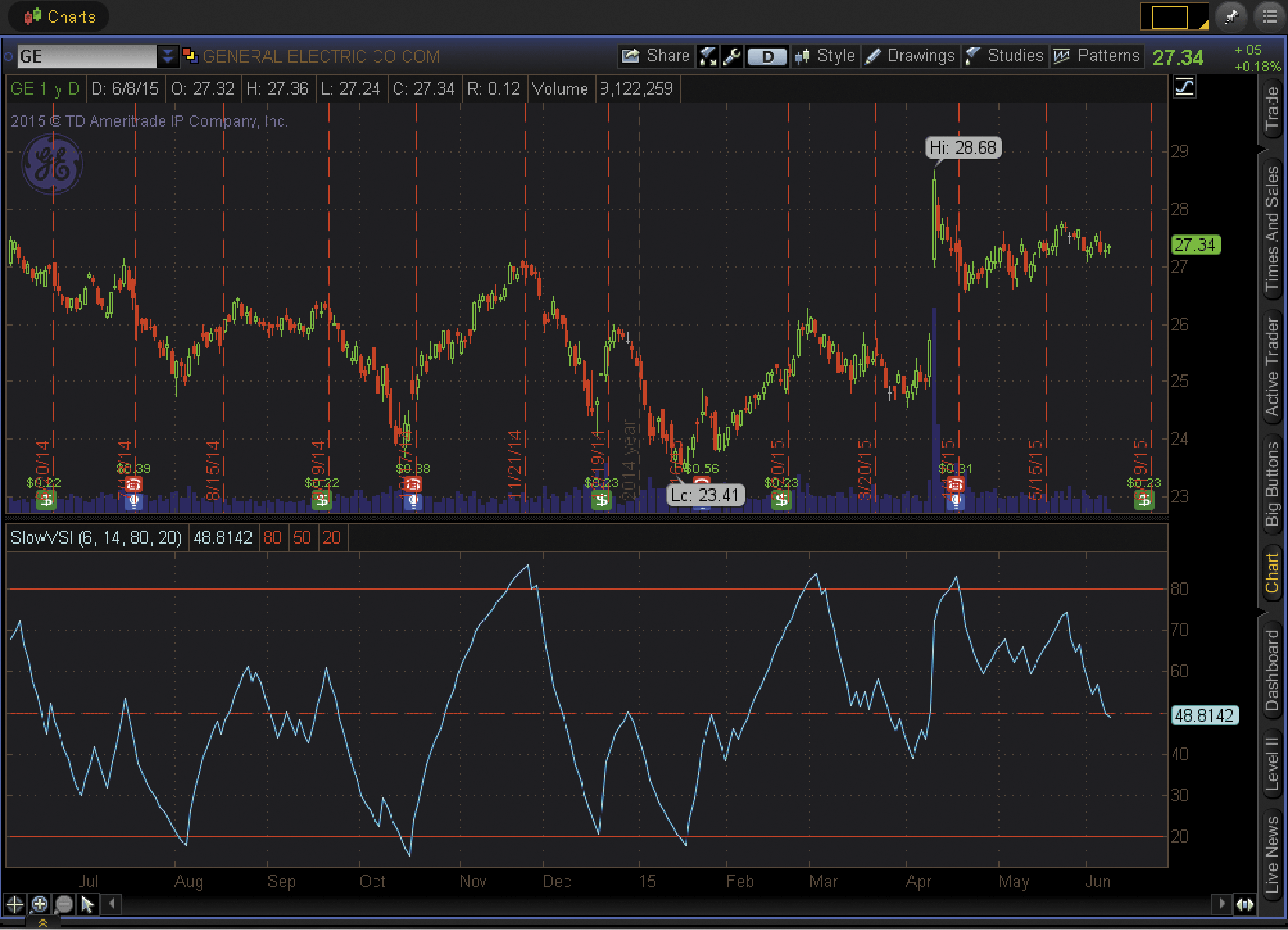
FIGURE 3: THINKORSWIM. The SlowVSI is plotted on a chart
of GE over the past year.
In the example shown in Figure 3, you see the SlowVSI plotted on a chart of
GE over the past year. For a more detailed description of the indicator, please
see Apirine’s article in June 2015 issue.
—thinkorswim
A division of TD Ameritrade, Inc.
www.thinkorswim.com
BACK TO LIST

WEALTH-LAB: AUGUST 2015
The slow relative volume index (SVSI) introduced by Vitali Apirine in his
June 2015 STOCKS & COMMODITIES article, “The Slow Volume Strength
Index,” is a momentum volume oscillator similar to its sibling, the SRSI
(slow relative strength index, described in Apirine’s April 2015 STOCKS & COMMODITIES
article, “The Slow Relative Strength Index”) in application and
interpretation. Oscillating between zero and 100, the SVSI becomes overbought
after reaching 80 and oversold after dropping below 20. Signals can also be
generated by looking for centerline crossovers and divergences.
As with the RSI (relative strength index) after which the SVSI is modeled,
SVSI could be put to use to screen for dips in established trends. The following
example trading system will focus on this ability. Here are its rules:
- Established long trend: Close price is above
a medium-term SMA
- Dip in the uptrend: SVSI gets below 50
- Enter long at market next bar
- Exit long on a trailing stop when the low price falls
below the lowest low of N days.
The trailing stop parameter (lowest low of N days) controls the trade
duration: set it to a shorter period (five bars) to profit from small rallies,
or to a longer period (for example, 20–50 bars) to catch larger trends (see
Figure 4).
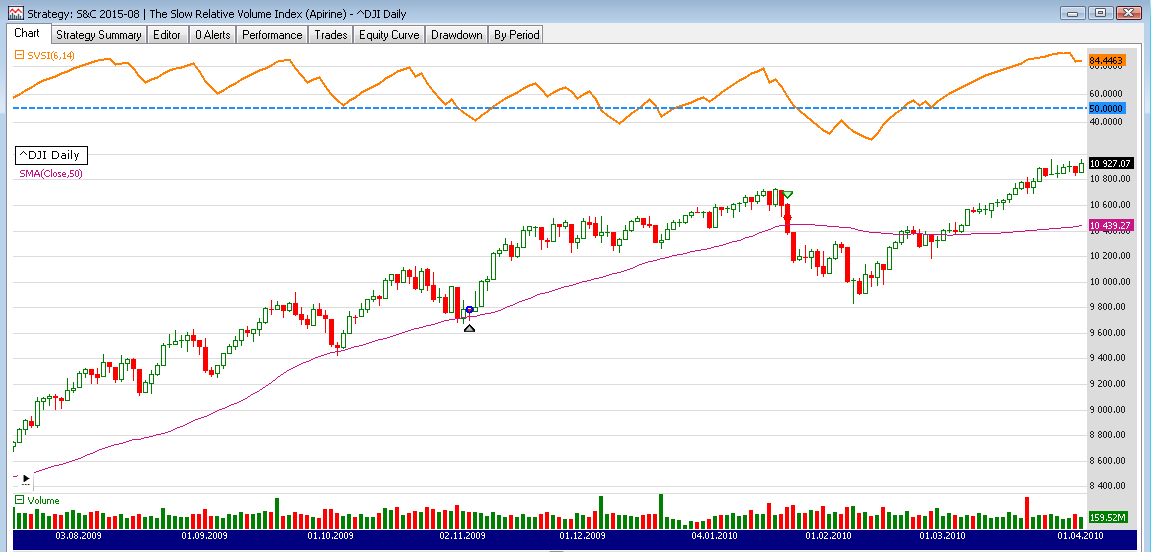
FIGURE 4: WEALTH-LAB, SVSI. Here is a characteristic
trade on the ^DJIA when the SVSI dips below 50 in a strong uptrend.
You will find the SVSI indicator installed under the “TASC Magazine
Indicators” group in Wealth-Lab after you update the TASCIndicators library
to version 2015.07 or later, You can plot the indicator on a chart or use it
as an entry or exit condition in a rule-based strategy without having to program
any code yourself.
The code is shown below.
using System;
using System.Collections.Generic;
using System.Text;
using System.Drawing;
using WealthLab;
using WealthLab.Indicators;
using TASCIndicators;
namespace WealthLab.Strategies
{
public class TASCTips201507 : WealthScript
{
private StrategyParameter paramSVSIPeriod;
private StrategyParameter paramSVSIWMAPeriod;
private StrategyParameter paramSVSIThreshold;
private StrategyParameter paramSMAPeriod;
private StrategyParameter paramExitChannel;
public TASCTips201507()
{
paramSVSIPeriod = CreateParameter("SVSI Period",6,6,30,2);
paramSVSIWMAPeriod = CreateParameter("SVSI WilderMA Period",14,8,52,4);
paramSVSIThreshold = CreateParameter("SVSI Threshold",50,40,90,5);
paramSMAPeriod = CreateParameter("SMA Period",40,10,100,10);
paramExitChannel = CreateParameter("Trailing Exit",20,5,50,5);
}
protected override void Execute()
{
int svsiThreshold = paramSVSIThreshold.ValueInt;
int smaPeriod = paramSMAPeriod.ValueInt;
int trailingExit = paramExitChannel.ValueInt;
SVSI svsi = SVSI.Series(Bars,paramSVSIPeriod.ValueInt,
paramSVSIWMAPeriod.ValueInt);
SMA sma = SMA.Series(Close,smaPeriod);
ChartPane paneSVSI1 = CreatePane(40,true,true);
PlotSeries(PricePane,sma,Color.MediumVioletRed,LineStyle.Solid,1);
PlotSeries(paneSVSI1,svsi,Color.FromArgb(255,255,128,0),LineStyle.Solid,2);
DrawHorzLine(paneSVSI1,50,Color.DodgerBlue,LineStyle.Dashed,2);
for(int bar = GetTradingLoopStartBar(1); bar < Bars.Count; bar++)
{
if (IsLastPositionActive)
{
SellAtTrailingStop(bar+1,LastPosition,
Lowest.Series(Low,trailingExit)[bar]);
}
else
{
if( Close[bar] > sma[bar] &&
svsi[bar] < svsiThreshold )
BuyAtMarket(bar+1);
}
}
}
}
}
—Eugene, Wealth-Lab team
MS123, LLC
www.wealth-lab.com
BACK TO LIST

NEUROSHELL TRADER: AUGUST 2015
The slow volume strength index (SVSI) described by Vitali Apirine in his June
2015 article, “The Slow Volume Strength Index,” can be easily implemented
with a few of NeuroShell Trader’s 800+ indicators. Simply select new
indicator from the insert menu and use the indicator wizard to
set up the following indicators:
C1: ExpAvg(Close,6)
V4: ExpAvg(IfThenElse(A>B(Close,C1),Volume,0),14)
V5: ExpAvg(IfThenElse(A<B(Close,C1),Volume,0),14)
RR: IfThenElse(A=B(V5,0),100,Sub(100,Divide(100,Add2(1,Divide(V4,V5)))))
Users of NeuroShell Trader can go to the STOCKS & COMMODITIES section
of the NeuroShell Trader free technical support website to download a copy
of this or any previous Traders’ Tips.
A sample chart is shown in Figure 5.

FIGURE 5: NEUROSHELL TRADER, SVSI. This sample NeuroShell
Trader chart displays the SVSI on the DJIA.
—Marge Sherald, Ward Systems Group, Inc.
301 662-7950, sales@wardsystems.com
www.neuroshell.com
BACK TO LIST

AIQ: AUGUST 2015
The AIQ code based on Vitali Apirine’s June 2015 article in S&C, “The
Slow Volume Strength Index,” is provided for download from the following
website:
!THE SLOW VOLUME STRENGTH INDEX
!Author: Vitali Aiprine, TASC April 2015
!Coded by: Richard Denning 6/10/2015
!www.TradersEdgeSystems.com
!INPUTS FOR INDICATOR:
emaLen is 6.
wilderLen is 14.
!INDICATOR FORMULAS:
ema is expavg([close],emaLen).
pDif is iff([close] - ema > 0,[volume],0).
nDif is iff([close] - ema < 0,[volume],0).
rsiLen is 2 * wilderLen - 1.
AvgU is expavg(pDif,rsiLen).
AvgD is expavg(nDif,rsiLen).
svsi is 100-(100/(1+(AvgU/AvgD))). !PLOT
The code provided for the slow volume strength index (SVSI) may be plotted
as an indicator, as shown in Figure 6.
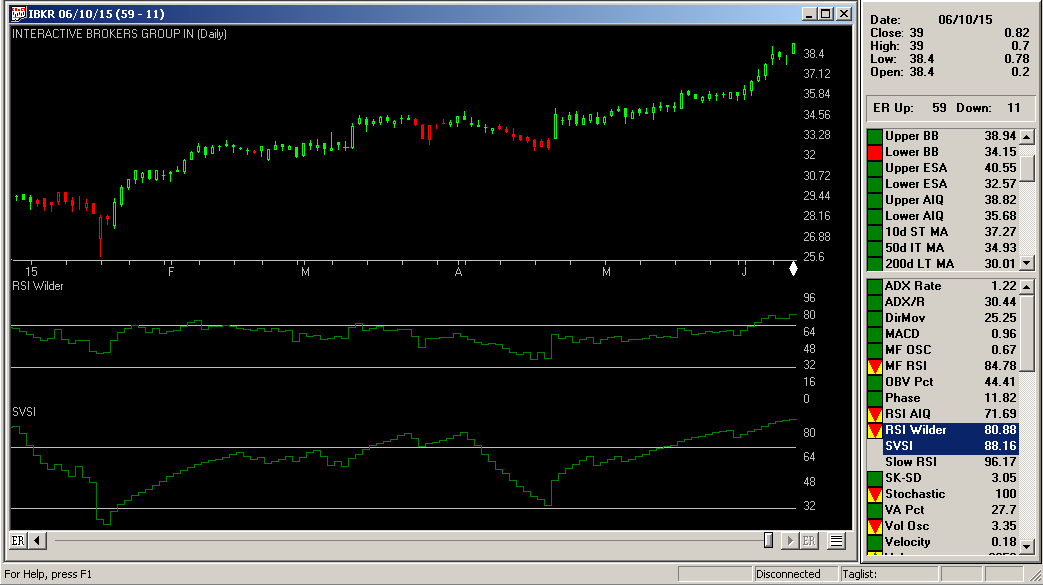
FIGURE 6: AIQ. Here is the SVSI (6,14) indicator compared
to the classic RSI (14).
—Richard Denning
info@TradersEdgeSystems.com
for AIQ Systems
BACK TO LIST

TRADERSSTUDIO: AUGUST 2015
The TradersStudio code based on Vitali Apirine’s June 2015 article in
S&C, “The Slow Volume Strength Index,” is provided for download
from the following website:
The following two code files are contained in the download:
- Function SlowVRSI—Computes the slow RSI values
- Indicator plot slowVRSI_IND—For plotting the slow
RSI indicator on a chart.
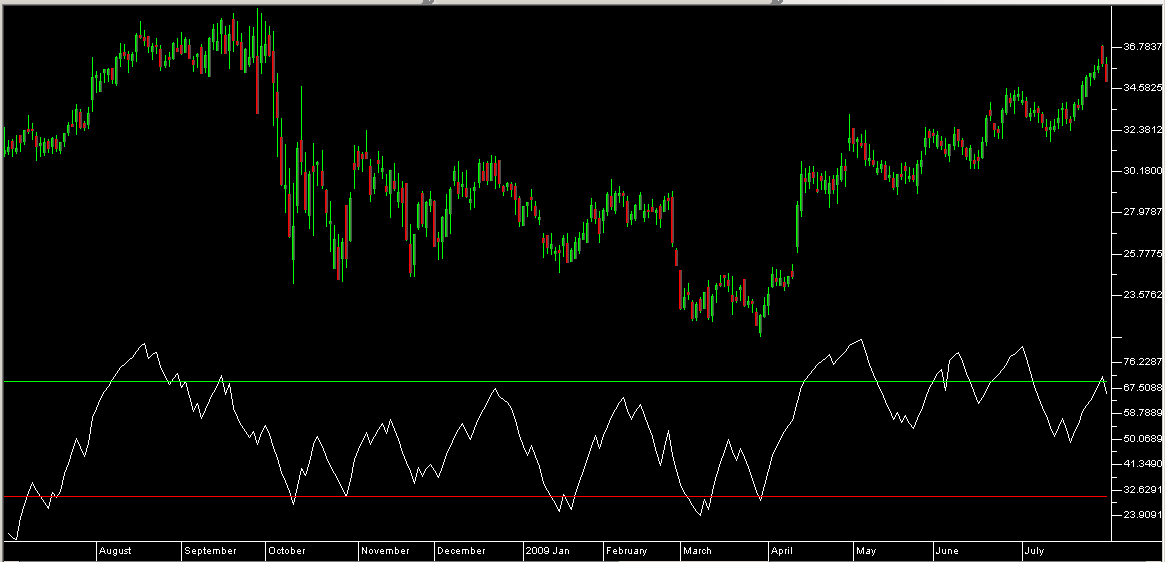
FIGURE 7: TRADERSSTUDIO. Here is an example of the SVSI
indicator on a chart of ESRX.
Figure 7 shows the indicator plotted on a chart of ESRX. The TradersStudio
code is shown here:
'THE SLOW VOLUME STRENGTH INDEX
'Author: Vitali Aprine, TASC June 2015
'Coded by: Richard Denning 6/10/2015
'www.TradersEdgeSystems.com
'FUNCTION THAT RETURNS THE SVSI VALUES:
function SlowVRSI(emaLen, wilderLen)
'emaLen = 6, wilderLen = 14
'INDICATOR FORMULAS:
Dim ema,pDif,nDif,rsiLen,AvgU,AvgD
Dim sVSI As BarArray
ema = xaverage(C,emaLen)
pDif = IIF(C - ema > 0,V,0)
nDif = IIF(C - ema < 0,V,0)
rsiLen = 2 * wilderLen - 1
AvgU = xaverage(pDif,rsiLen)
AvgD = xaverage(nDif,rsiLen)
if avgd <> 0 then sVSI = 100-(100/(1+(AvgU/AvgD)))
SlowVRSI = sVSI
End Function
'--------------------------------------------------------
'INDICATOR PLOT CODE:
sub SlowVRSI_IND(emaLen, rsiLen)
plot1(slowVRSI(emaLen, rsiLen))
plot2(70)
plot3(30)
End Sub
'--------------------------------------------------------
—Richard Denning
info@TradersEdgeSystems.com
for TradersStudio
BACK TO LIST

NINJATRADER: AUGUST 2015
We are providing a custom NinjaScript indicator based on Vitali Apirine’s
June 2015 article, “The Slow Volume Strength Index.” This indicator,
the slow volume strength index or SVSI, is available for download
at www.ninjatrader.com/SC/August2015SC.zip.
Once you have it downloaded, from within the NinjaTrader Control Center window,
select the menu File → Utilities → Import NinjaScript and select
the downloaded file. This file is for NinjaTrader version 7 or greater.
You can review the indicator source code by selecting the menu Tools → Edit
NinjaScript → Indicator from within the NinjaTrader Control Center window
and selecting the SVSI file.
NinjaScript uses compiled DLLs that run native, not interpreted, which provides
you with the highest performance possible.
A sample chart implementing the indicator on a chart of the DJIA is shown
in Figure 8.
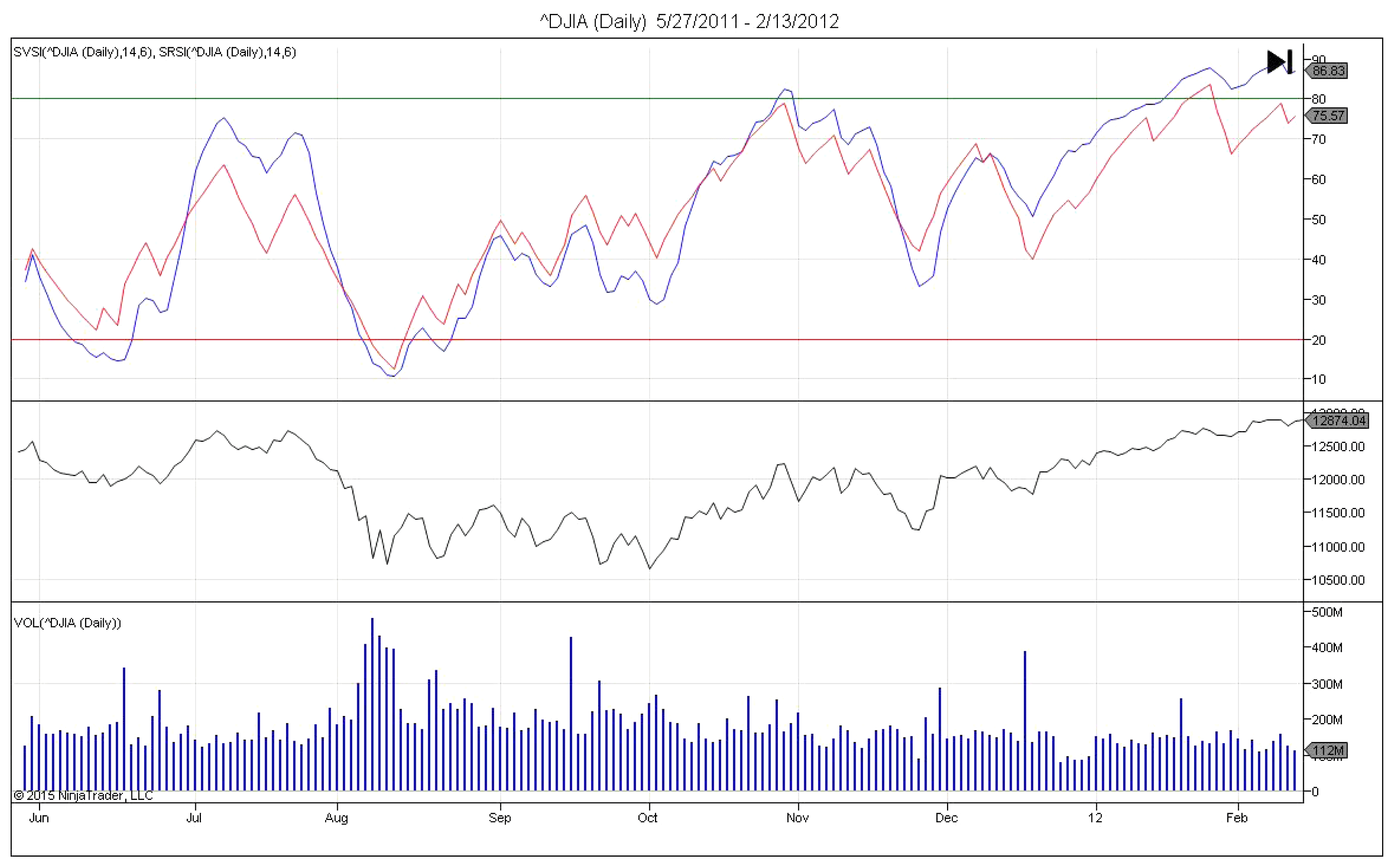
FIGURE 8: NINJATRADER. This chart shows the indicator
applied to the daily DJIA index in NinjaTrader with the SVSI (slow volume
strength index) and SRSI (slow RSI) plotted together above the DJIA. Volume
is plotted below the DJIA.
—Raymond Deux & Patrick Hodges
NinjaTrader, LLC
www.ninjatrader.com
BACK TO LIST

UPDATA: AUGUST 2015
Our Traders’ Tip for this month is based on an article by Vitali Apirine
that appeared in the June 2015 issue of STOCKS & COMMODITIES titled “The
Slow Volume Strength Index.” In the article, Apirine delivers a variation
of J. Welles Wilder’s classic relative strength index (RSI). Apirine
substitutes the close-to-close difference input in the RSI with the difference
between the close and moving average as the input for the SVSI in order to
assign positive and negative values to volume. See Figure 9 for an example
implementation of the SVSI on a chart in Updata.
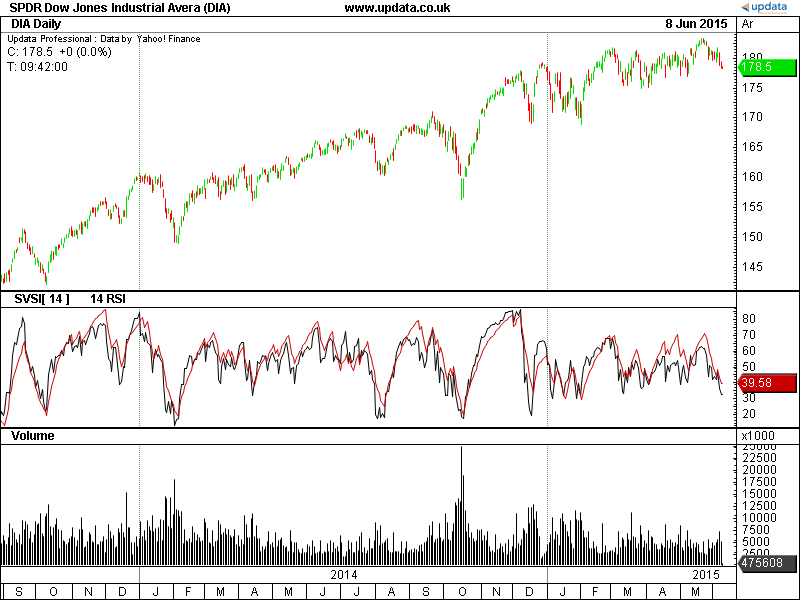
FIGURE 9: UPDATA, SVSI. This chart shows the Dow Jones
Industrial Average ETF (DIA) with the SVSI [14] shown in red and the standard
RSI [14] for comparison.
The Updata code for this indicator is in the Updata Library and it may be
downloaded by clicking the custom menu and then indicator library.
Those who cannot access the library due to a firewall may paste the code shown
here into the Updata custom editor and save it.
PARAMETER "Smooth Period" #SMOOTH=6
PARAMETER "SVSI Period" #PERIOD=14
NAME "SVSI[" #PERIOD "]" ""
COLOUR RGB(200,0,0)
@AVG=0
@POSVOL=0
@NEGVOL=0
@SVSI=0
FOR #CURDATE=#PERIOD TO #LASTDATE
@AVG=SGNL(CLOSE,#SMOOTH,E)
IF #CURDATE<#PERIOD-1
@POSVOL=SGNL(MAX(CLOSE>@AVG,0)*VOL,#PERIOD-1,M)
@NEGVOL=SGNL(MAX(CLOSE<@AVG,0)*VOL,#PERIOD-1,M)
ELSE
@POSVOL=(MAX(CLOSE>@AVG,0)*VOL+(#PERIOD-1)*@POSVOL)/#PERIOD
@NEGVOL=(MAX(CLOSE<@AVG,0)*VOL+(#PERIOD-1)*@NEGVOL)/#PERIOD
@SVSI=100-(100/(1+(@POSVOL/@NEGVOL)))
ENDIF
@PLOT=@SVSI
NEXT
—Updata support team
support@updata.co.uk
www.updata.co.uk
BACK TO LIST
Originally published in the August 2015 issue of
Technical Analysis of STOCKS & COMMODITIES magazine.
All rights reserved. © Copyright 2015, Technical Analysis, Inc.


















